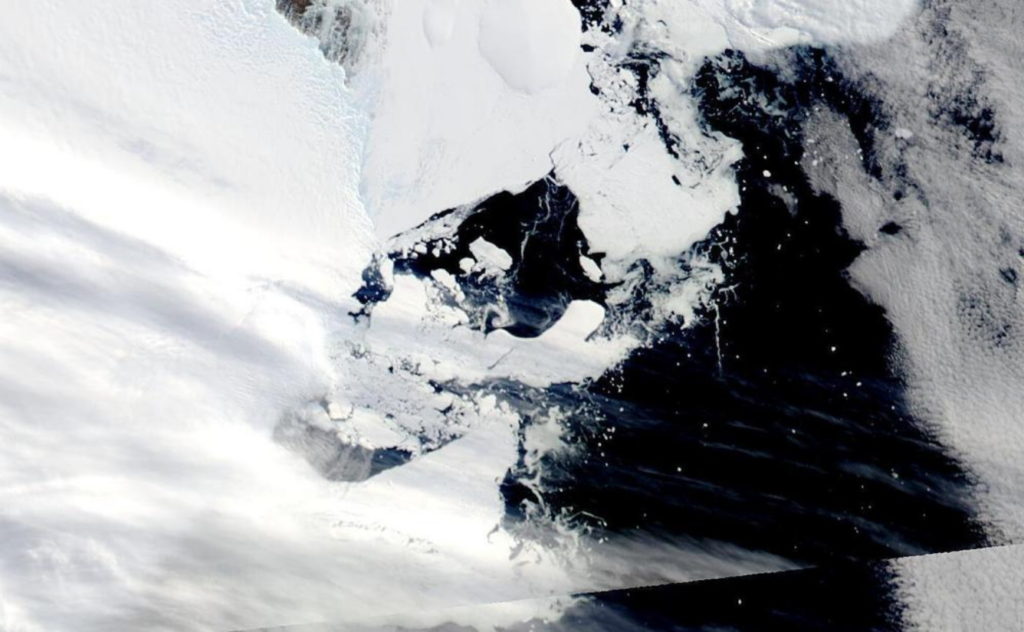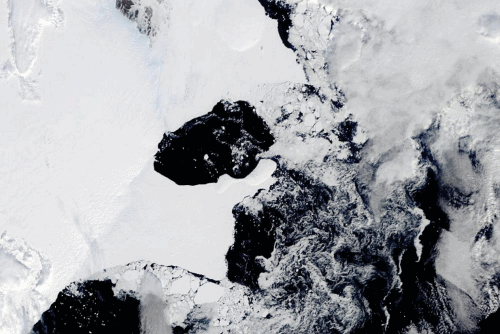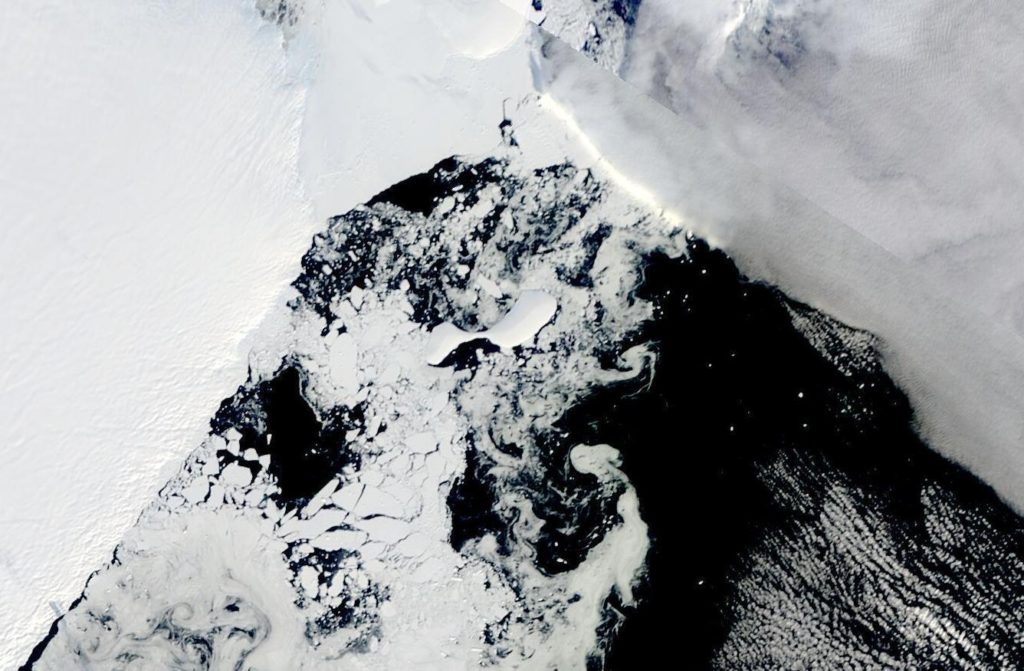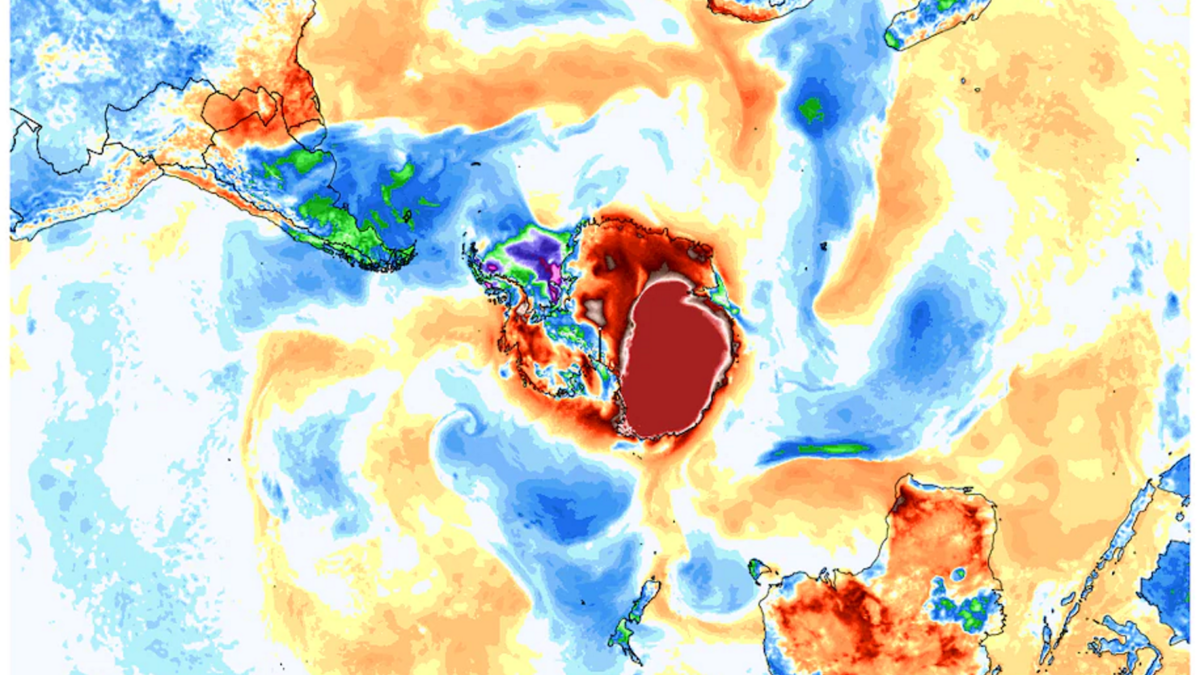Thinning Antarctic ice shelf finally crumbles after extreme heatwave – “The Glenzer Conger ice shelf presumably had been there for thousands of years, and it’s never going to be there again”

By Isla Binnie
25 March 2022
(Reuters) – An East Antarctica ice shelf disintegrated this month following a period of extreme heat in the region, according to scientists.
Satellite images show the 1,200 square-kilometre Conger Ice Shelf collapsed completely on or around March 15.
“Possible it hit its tipping point following the #Antarctic #AtmosphericRiver and heat wave too?” asked NASA Earth and Planetary Scientist Catherine Colello Walker on Twitter on Friday, sharing images of a white expanse crumbling into shards over the dark ocean.
Ice shelves, permanent floating sheets of ice attached to land, take thousands of years to form and act like levees holding back snow and ice that would otherwise flow into the ocean, causing seas to rise.
The March heat wave, with temperatures reaching 70 degrees Fahrenheit (40 degrees Celsius) above normal in parts of East Antarctica, was tied to the atmospheric river phenomenon, said Peter Neff, a glaciologist at the University of Minnesota.
This process creates columns hundreds of miles long that carry water vapour from the tropics, creating an effect Neff described as “a fire hose of moisture.”
“The (Antarctic) climate is incredibly variable but this was off-scale,” Neff said. “This was at least twice as extreme of a warming event as we would have expected.”

Temperatures in the region normally sit around -60 degrees Fahrenheit (-51 degrees Celsius) at this time of year, but they were around 10 degrees (-12 Celsius) earlier this month.
They have now gone back to normal, Neff said.
Surrounded by vast oceans and buffered by winds that tend to protect it from large warm-air intrusions, the frozen continent is responding more slowly to climate change than the Arctic, which is warming at three times the rate of the rest of the world.
In the last century, East Antarctica barely warmed at all, but some regions have been affected and the continent lost an average of 149 billion tonnes of ice per year from 2002 to 2020, according to NASA. The loss of the Conger Ice Shelf is the latest example of changes afoot.
“This poor little ice shelf was just hanging on for dear life in this really warm coastal climate and it had been thinning and getting damaged over the last few decades,” said Neff. [more]
Thinning Antarctic ice shelf finally crumbles after heatwave

Ice shelf collapses in previously stable East Antarctica
By Seth Borenstein
25 March 2022
(AP) – An ice shelf the size of New York City has collapsed in East Antarctica, an area long thought to be stable and not hit much by climate change, concerned scientists said Friday.
The collapse, captured by satellite images, marked the first time in human history that the frigid region had an ice shelf collapse. It happened at the beginning of a freakish warm spell last week when temperatures soared more than 70 degrees (40 Celsius) warmer than normal in some spots of East Antarctica. Satellite photos show the area had been shrinking rapidly the last couple of years, and now scientists wonder if they have been overestimating East Antarctica’s stability and resistance to global warming that has been melting ice rapidly on the smaller western side and the vulnerable peninsula.
The ice shelf, about 460 square miles wide (1200 square kilometers) holding in the Conger and Glenzer glaciers from the warmer water, collapsed between March 14 and 16, said ice scientist Catherine Walker of the Woods Hole Oceanographic Institute. She said scientists have never seen this happen in this part of the continent, making it worrisome.
“The Glenzer Conger ice shelf presumably had been there for thousands of years and it’s not ever going to be there again,” said University of Minnesota ice scientist Peter Neff.
The issue isn’t the amount of ice lost in this collapse, Neff and Walker said. That is negligible. It’s more about the where it happened.
Neff said he worries that previous assumptions about East Antarctica’s stability may not be correct. And that’s important because if the water frozen in East Antarctica melted — and that’s a millennia-long process if not longer — it would raise seas across the globe more than 160 feet (50 meters). It’s more than five times the ice in the more vulnerable West Antarctic Ice Sheet, where scientists have concentrated much of their research.

Helen Amanda Fricker, co-director of the Scripps Polar Center at the University of California San Diego, said researchers have to spend more time looking at that part of the continent.
“East Antarctica is starting to change. There is mass loss starting to happen,” Fricker said. “We need to know how stable each one of the ice shelves are because once one disappears” it means glaciers melt into the warming water and “some of that water will come to San Diego and elsewhere.”
Scientists had been seeing this particular ice shelf — closest to Australia — shrink a bit since the 1970s, Neff said. Then in 2020, the shelf’s ice loss sped up to losing about half of itself every month or so, Walker said.
“We probably are seeing the result of a lot of long-time increased ocean warming there,” Walker said. “it’s just been melting and melting.” [more]


